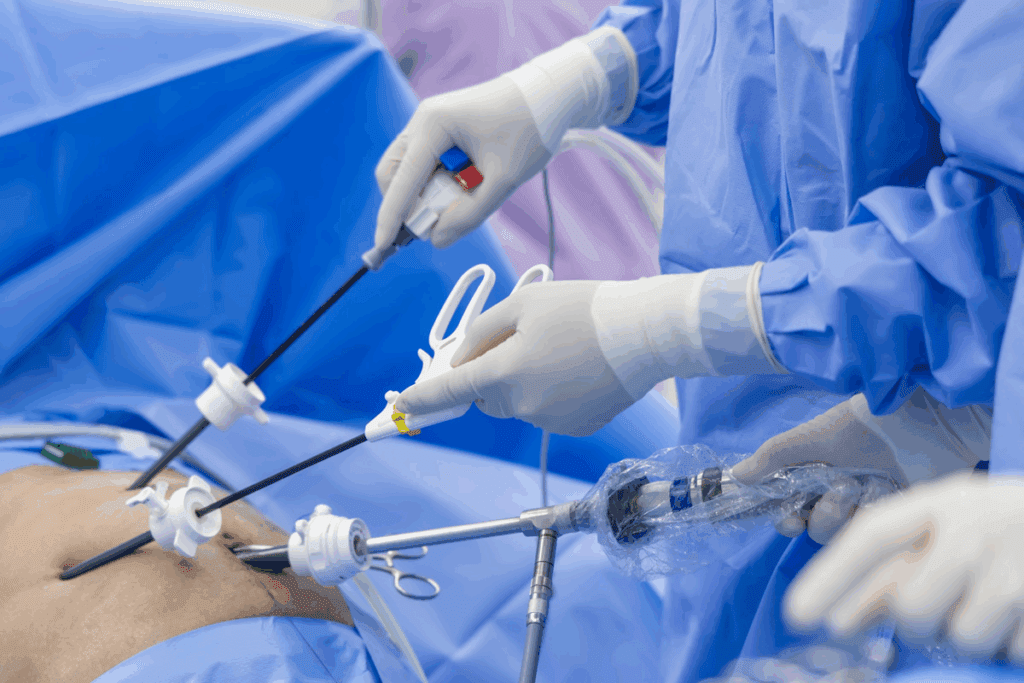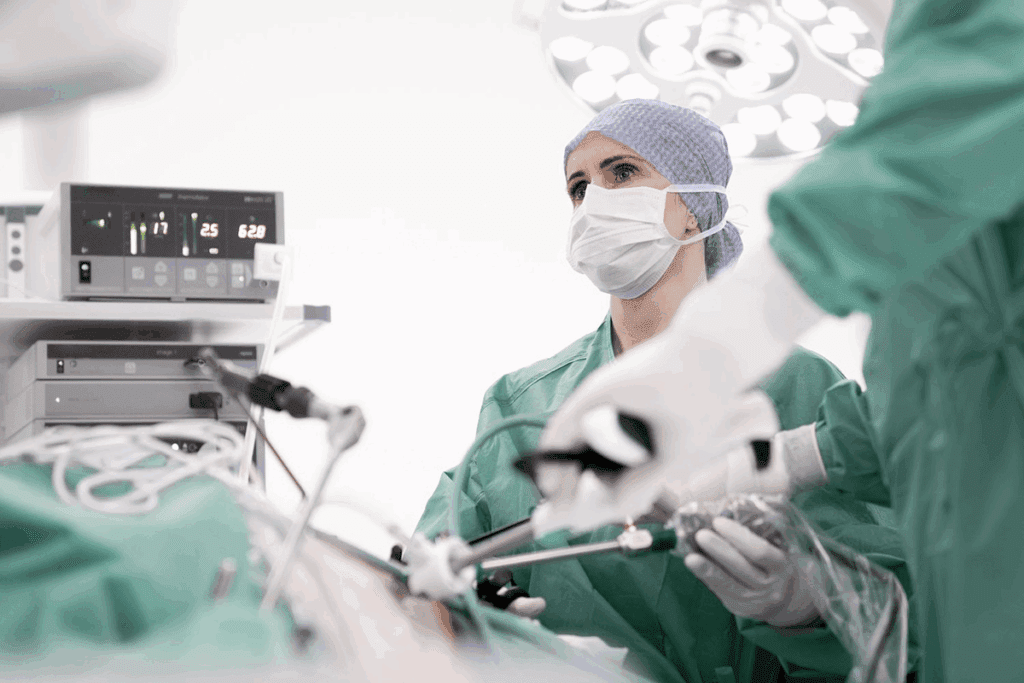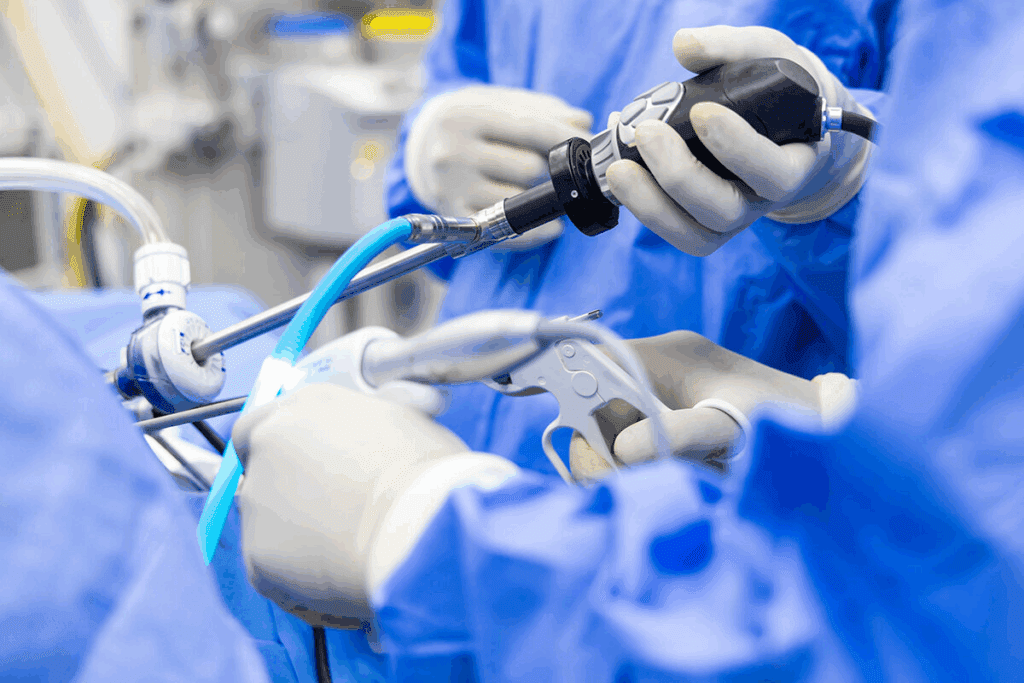Last Updated on November 25, 2025 by Ugurkan Demir

Coronary artery bypass graft surgery, or heart artery bypass, is a complex operation. It improves blood flow to the heart by creating a new path. This path goes around blockages, often caused by atherosclerosis.
At Liv Hospital, we have a rich history of delivering top-notch, patient-centered care. Our team of experts uses the latest protocols to ensure the best results for patients. This is true for those undergoing coronary artery bypass graft surgery.
It’s important to know the essential facts about this surgery. We will explore the history, definitions, diagrams, and other key aspects of cardiac bypass. Understanding cardiac bypass helps patients and healthcare seekers learn more about this life-saving procedure and its role in modern heart care.

Cardiac bypass surgery helps the heart by bypassing blocked arteries. It’s key for those with severe heart disease. It improves blood flow to the heart muscle.
A coronary bypass, or CABG, uses grafts from the patient to bypass blocked arteries. These grafts come from the internal mammary artery or the saphenous vein. It helps the heart get more blood, easing pain and lowering heart attack risk.
CABG is known by different names in various places. “Bypass Herz” is used in Europe, while “heart bypass graft” is common in English-speaking areas. Knowing these terms helps patients understand the procedure better.
| Term | Expansion | Description |
| CABG | Coronary Artery Bypass Grafting | Surgical procedure to improve blood flow to the heart |
| CABG coronary | Coronary Artery Bypass Grafting for coronary arteries | Specific application of CABG for coronary artery disease |
| Heart Bypass Graft | Graft used in heart bypass surgery | Graft taken from patient’s body to bypass blocked arteries |

Cardiac bypass surgery has made huge strides in heart care. It has seen many improvements over the years.
The first heart bypass surgery was done in the 1960s. It was a big step forward in treating heart disease. This surgery gave hope to those with severe heart problems.
CABG has seen many changes over time. Improvements include better surgical methods, graft materials, and care before and after surgery. These changes have made the surgery safer and more effective.
| Year | Milestone |
| 1960s | First successful CABG surgery |
| 1970s | Introduction of saphenous vein grafts |
| 1980s | Advancements in internal mammary artery grafts |
Thanks to these advancements, CABG is now a safe and successful treatment. It has greatly improved the lives of those who have it.
It’s important to understand coronary artery disease to see why bypass surgery is needed. This disease narrows or blocks the coronary arteries. It happens because of atherosclerosis, where plaque builds up in the arteries.
Atherosclerosis is the main cause of coronary artery disease. When plaque builds up, it can cause arterial blockages. This reduces blood flow to the heart muscle. It can lead to symptoms and serious problems.
The symptoms of coronary artery disease vary. They often include chest pain (angina), shortness of breath, and fatigue. Tests like coronary angiography and stress tests help find out how bad the disease is.
Coronary artery disease is a big problem worldwide. Knowing its causes, symptoms, and how to diagnose it is key. It helps decide if heart artery bypass surgery is needed.
Coronary artery bypass grafting (CABG) includes several surgical methods. These are single, double, triple, and quadruple bypass procedures. The type of surgery depends on the extent and location of coronary artery disease.
A single bypass procedure involves grafting a single blocked artery. It’s used when there’s a big blockage in one major coronary artery. This procedure is simpler than the others.
In a double bypass procedure, two blocked arteries are grafted. This is needed when two major arteries have big blockages. It’s done to restore blood flow.
A triple bypass procedure is for when three coronary arteries are blocked. This surgery is more complex. It requires grafting three arteries to ensure blood flow to the heart.
A quadruple bypass involves grafting four blocked arteries. Sometimes, patients need even more complex surgeries with multiple grafts. These surgeries are customized based on the patient’s disease extent and location.
It’s important for patients to understand the different heart bypass surgery procedures. Each procedure has its own considerations and outcomes. This knowledge helps patients make informed decisions about their treatment.
Heart bypass surgery diagrams are key for both patients and doctors. They help us see the heart’s anatomy, the disease’s nature, and the surgery details.
It’s important to know the difference between a healthy and diseased heart. A healthy heart has clear arteries. But a diseased heart has arteries narrowed or blocked by plaque.
Diagrams show how surgeons make new paths for blood flow. They use a healthy blood vessel to bypass blocked or narrowed arteries.
A triple bypass diagram shows three grafts for blocked arteries. This detailed surgery needs careful planning and execution. The diagrams help patients understand the surgery’s extent.
Diagrams are very helpful for quadruple bypass patients. They show four grafts, highlighting the surgery’s complexity and thoroughness.
| Type of Bypass | Description | Complexity Level |
| Single Bypass | One graft used to bypass a blocked artery | Low |
| Double Bypass | Two grafts used for two blocked arteries | Moderate |
| Triple Bypass | Three grafts for three blocked arteries | High |
| Quadruple Bypass | Four grafts for four blocked arteries | Very High |
Heart bypass surgery diagrams are very important. They help patients understand the surgery’s complexity and the care they receive.
“The use of diagrams in explaining heart bypass surgery to patients has significantly improved their understanding and reduced anxiety.”
— Medical Expert, Cardiothoracic Surgeon
Grafts are key in cardiac bypass surgery, helping blood flow around blocked arteries. Choosing the right graft is vital for the surgery’s success. We look at the patient’s health, the surgery’s needs, and the graft’s long-term performance.
The internal mammary artery is a top choice for grafts. It’s durable and has high success rates. This makes it a great option for many patients needing cardiac bypass surgery.
Saphenous vein grafts come from the legs. They’re not as long-lasting as arteries but are used often. They’re paired with other grafts to get the best results.
Other arteries like the radial artery and the right gastroepiploic artery are also used. These options let surgeons tailor the surgery to each patient’s needs.
Choosing the right graft can greatly improve the success of cardiac bypass surgery. It also boosts the patient’s quality of life.
Cardiac bypass surgery has many important steps, from getting ready to the surgery itself. Knowing these steps helps patients and their families understand the complexity of modern heart surgery.
Getting ready for heart bypass surgery starts with a full check-up. This includes looking at your medical history, current health, and test results. After deciding to have surgery, you’ll get general anesthesia to keep you comfortable and pain-free.
The traditional way involves opening the chest to reach the heart. This lets surgeons see and work on the heart directly. They often use cardiopulmonary bypass with this method.
There are also less invasive ways to do heart surgery. These use smaller cuts and might mean less time in recovery. But, they’re not right for everyone and depend on your heart’s condition.
Heart bypass surgery can be done with or without a heart-lung machine. The choice depends on your health and the surgery’s complexity.
| Procedure Type | Description | Key Considerations |
| On-Pump | Uses cardiopulmonary bypass | Allows for a steady heart during surgery |
| Off-Pump | Does not use cardiopulmonary bypass | May lower risk of some problems |
Understanding the different heart bypass surgery methods helps patients make better choices. Our team is dedicated to giving top care and support every step of the way.
Cardiac bypass surgery is a good choice for those with congestive heart failure (CHF) and coronary artery disease (CAD). CHF makes it hard for the heart to pump enough blood. When CAD is added, it makes things even tougher for the heart.
“The integration of cardiac bypass surgery into the treatment plan for CHF patients with CAD can significantly improve their quality of life and survival rates,” as emphasized by medical professionals. We will explore the connection between CHF and CAD, special considerations for CHF patients undergoing cardiac bypass, and the expected outcomes.
CAD often leads to CHF because it blocks blood flow to the heart. This weakens the heart, causing it to fail. Knowing this link is key to deciding if cardiac bypass surgery is right.
CHF patients need special care before and during surgery. We look at how severe their CHF and CAD are, and their overall health. This helps us tailor the surgery to fit their needs.
Research shows that cardiac bypass surgery can help CHF patients with CAD live longer and feel better. But, each patient’s results depend on many things. These include their health before surgery, the surgery itself, and how well they recover.
By understanding CHF and CAD, and choosing the right patients for surgery, we can offer a treatment that greatly improves their lives.
Recovering from artery bypass surgery is a big job. It involves staying in the hospital, joining rehabilitation programs, and getting ongoing care. This whole process is key to helping patients get better and avoid problems.
The first step in getting better is in the hospital. Here, doctors watch for any issues right after surgery. Managing pain well and moving around early are very important. A team of doctors and nurses work together to care for patients.
Cardiac rehab programs are a big part of getting better. They include exercise, learning about heart health, and stress counseling. Research shows that these programs really help patients after heart surgery.
| Components of Cardiac Rehabilitation | Benefits |
| Exercise Training | Improves cardiovascular health and functional capacity |
| Education on Heart-Healthy Living | Empowers patients to make lifestyle changes |
| Counseling | Reduces stress and improves mental health |
Keeping up with care over time is very important. It helps manage the patient’s health and prevent future heart problems. Regular visits to doctors and taking medicines as directed are key. We stress the need for medication management and healthy living to keep the surgery’s benefits.
With a good recovery and rehab plan, patients can see big improvements in their life and health after heart surgery.
Cardiac bypass surgery has changed how we treat heart disease. It saves lives for those with serious heart issues. As technology and surgery skills get better, the future looks bright for heart patients.
Coronary artery bypass grafting is key in treating serious heart disease. Research and new ideas are making it better. Advances in grafts, surgery, and care are helping patients more.
The future of CABG will bring new, less invasive ways to treat the heart. It will also focus on treating each patient as an individual. This means better care and outcomes for everyone.
Using the latest technology and proven methods is essential. It makes heart surgery safer and more effective. By putting patients first and using the newest in cardiac surgery, we can make a big difference in people’s lives.
Cardiac bypass surgery, also known as coronary artery bypass grafting (CABG), is a surgical procedure. It creates a detour around a blocked or narrowed section of a coronary artery.
Coronary bypass uses grafts from the patient’s body. These grafts, like the internal mammary artery or the saphenous vein, bypass a blocked or narrowed coronary artery.
The first heart bypass surgery was done in the 1960s. It was a big step forward in treating coronary artery disease.
Coronary artery disease (CAD) is when the coronary arteries narrow or block. This is due to atherosclerosis, which may require bypass surgery.
Heart bypass surgery includes single, double, triple, and quadruple bypass surgeries. These depend on how many coronary arteries are blocked.
A heart bypass diagram shows the anatomy of a healthy heart and a diseased heart. It also explains the basics of bypass grafting.
The internal mammary artery is often used because it’s durable and stays open long-term. The saphenous vein from the leg is also commonly used.
After artery bypass surgery, recovery and rehabilitation are key. It focuses on managing pain, watching for complications, and starting early movement.
Yes, cardiac bypass surgery can help patients with congestive heart failure (CHF) and coronary artery disease.
On-pump surgery uses a heart-lung machine to circulate blood. Off-pump surgery is done without this machine.
Cardiac bypass surgery has greatly improved treatment for coronary artery disease. It’s a lifesaving option for complex cases and improves quality of life.
Subscribe to our e-newsletter to stay informed about the latest innovations in the world of health and exclusive offers!